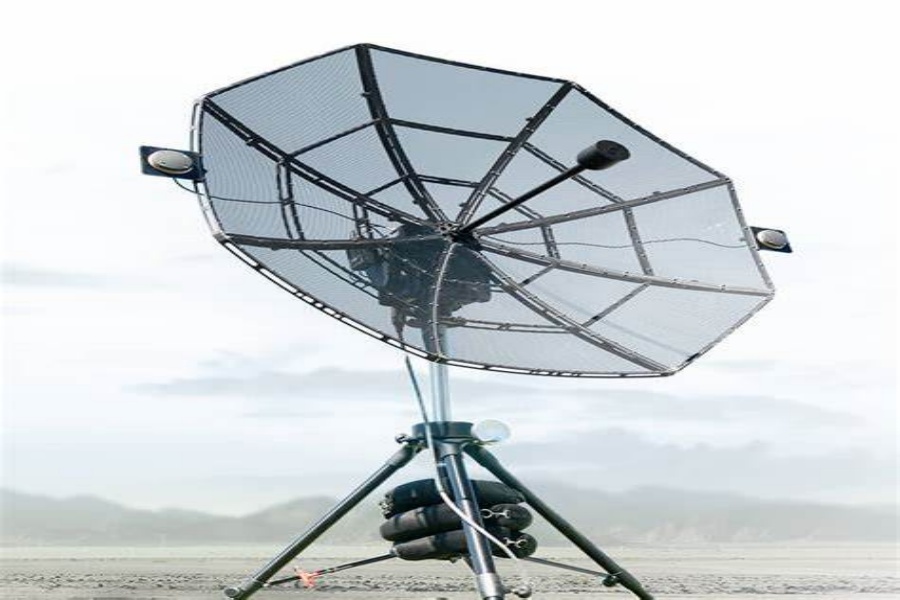
Satellite Antenna Tracker Precision Alignment for Uninterrupted Connectivity
When hurricanes disrupt terrestrial networks and cargo ships lose radio contact in stormy seas, satellite antenna trackers become the lifeline guardians—steering dishes through chaos to lock onto faint signals from orbiting sentinels. These precision rigs combine gyro-steedbackbone with algorithmic intuition, compensating for ocean swells that tilt platforms and atmospheric distortions that scramble data streams. Their servo motors, tuned to detect signal strength fluctuations measured in microwatts, make micro-adjustments faster than human reflexes while battling ice buildup in Arctic blizzards or sand abrasion in desert dust storms. Next-gen models now predict satellite trajectories using AI-trained star maps, automatically bypassing orbital debris fields that disrupt lesser systems. This relentless pursuit of celestial alignment transforms what were once static antennas into intelligent communication partners, proving that even in our wireless age, physical precision remains the bedrock of global connectivity.
Core Principles of Celestial Tracking Technology
A Satellite Antenna Tracker constitutes an integrated electromechanical system designed to maintain continuous alignment between ground-based antennas and moving satellites across multiple orbital planes. Constructed around high-torque servo motors and precision gear trains, these systems achieve angular positioning accuracy within 0.01 degrees while compensating for both predictable satellite trajectories and unexpected signal fluctuations. Modern designs incorporate phased array calibration sensors and adaptive signal processing algorithms that automatically adjust tracking parameters based on atmospheric conditions and electromagnetic interference levels. From geostationary television broadcast antennas to low Earth orbit scientific research terminals, these trackers maintain critical communication links through storms, solar flares, and platform movements.
Engineering Solutions for Signal Integrity
The operational reliability of Satellite Antenna Trackers stems from multi-layered technological approaches addressing unique communication challenges. Consider a maritime satellite terminal operating on a cargo ship traversing rough seas. The tracker in such applications employs gyro-stabilized platforms with predictive motion algorithms that anticipate vessel pitch and roll, maintaining dish alignment despite 15-degree wave-induced movements. Multi-spectral sensors detect raindrop density and ice accumulation, triggering built-in heating elements and vibration mechanisms to preserve signal clarity during severe weather. Polar region installations utilize trackers with aurora borealis interference filters and temperature-compensated lubricants that maintain functionality at -50°C while compensating for ionospheric disturbances.
Critical Performance Characteristics
Satellite Antenna Trackers deliver mission-critical reliability through three core technological advancements:
Dynamic Signal Optimization
Adaptive modulation recognition systems continuously analyze signal quality metrics, automatically adjusting tracking sensitivity and filter settings to maintain maximum data throughput during atmospheric scintillation events. This capability proved vital during hurricane relief operations where emergency communication terminals maintained links through heavy precipitation and wind shear conditions.
Environmental Resilience
Desert-operating trackers employ sandphobic surface treatments and pressurized bearing housings that expel abrasive particles, while coastal models utilize salt-neutralizing conformal coatings and hermetic sealing to combat marine corrosion.
Energy Efficiency
Solar-powered units incorporate sunlight-tracking photovoltaic panels that dual-function as power sources and celestial navigation references, reducing grid dependence by 60% in remote monitoring stations.
Sector-Specific Implementations
The versatility of Satellite Antenna Trackers becomes evident through their tailored applications:
Aerospace Telemetry:Rocket launch tracking stations utilize ultra-rapid slewing drives capable of 90-degree repositioning in under 3 seconds, maintaining continuous telemetry links during critical launch phases through plasma blackout conditions.
Disaster Response Networks:Mobile emergency communication units employ trackers with autonomous orbital pattern recognition, establishing satellite links within 90 seconds of deployment without manual calibration in crisis zones.
Scientific Research:Radio astronomy arrays incorporate quantum-enhanced trackers that maintain sub-arcsecond alignment precision for deep space observation, compensating for both Earth's rotation and tectonic plate movements.
Measurable Technical Advancements
Technological innovations in tracking systems yield quantifiable performance improvements:
Positioning Accuracy:Laser interferometer-guided systems now achieve 0.005-degree alignment precision, enabling high-definition video transmission from medium Earth orbit satellites to mobile newsgathering vehicles.
Operational Longevity:Wear-resistant harmonic drive systems extended maintenance intervals from 500 to 10,000 operational hours in broadcast satellite installations through diamond-coated gear teeth and magnetic particle lubrication.
Signal Acquisition Speed:AI-enhanced trackers reduced satellite acquisition time from 5 minutes to 18 seconds in maritime applications through machine learning algorithms that predict optimal search patterns based on historical orbital data.
Implementation Challenges and Solutions
Optimizing tracker performance requires addressing complex technical hurdles:
Atmospheric Distortion Compensation:Tropospheric turbulence initially degraded Ka-band signals until the implementation of real-time phase distortion correction algorithms that adjust beam forming parameters 1,000 times per second.
Thermal Deformation Management:Antenna reflector warping in desert environments caused signal loss until the introduction of carbon composite materials with near-zero thermal expansion coefficients paired with active surface adjustment actuators.
Electromagnetic Interference:Urban 5G signal congestion disrupted C-band communications until adaptive notch filtering systems were developed that dynamically nullify interfering frequencies while preserving satellite data integrity.
Emerging Technological Frontiers
Cutting-edge developments are redefining satellite tracking capabilities:
Quantum-Enhanced Tracking:Prototype systems using entangled photon detection demonstrate 400% improvement in weak signal acquisition, currently undergoing trials in deep space network applications.
Self-Healing Surfaces:Nanocomposite radome materials with microfluidic repair channels automatically seal micrometeoroid punctures, maintaining signal transparency in orbital debris-prone environments.
Cognitive Frequency Hopping:AI-driven spectrum management systems predict and avoid signal congestion by analyzing historical interference patterns and current spectrum occupancy in real-time.
Satellite Antenna Tracker supplier
As global connectivity demands intensify and satellite constellations proliferate, Satellite Antenna Trackers evolve from passive alignment tools into intelligent communication hubs. Their ability to merge precision mechanics with advanced signal processing ensures reliable data links will meet future bandwidth requirements while maintaining the accuracy needed for critical military, scientific, and commercial applications. Through continuous innovation in materials science and adaptive control systems, these technologies remain essential enablers of our increasingly connected planetary infrastructure.
LYRA Drive is a professional Satellite Antenna Tracker, slewing bearings ,slew drive and gears manufacturer provides customized slew bearing, drive and gears.For application-specific engineering solutions, contact LYRA to discuss technical specifications and implementation strategies.



